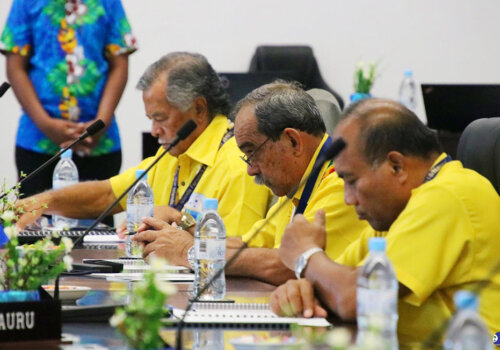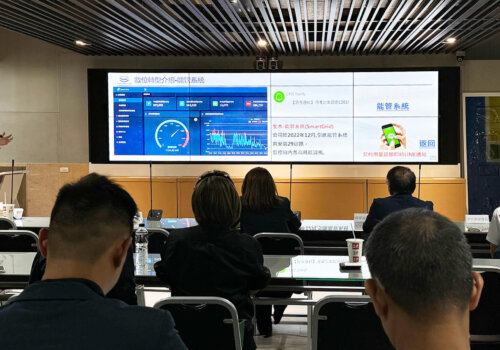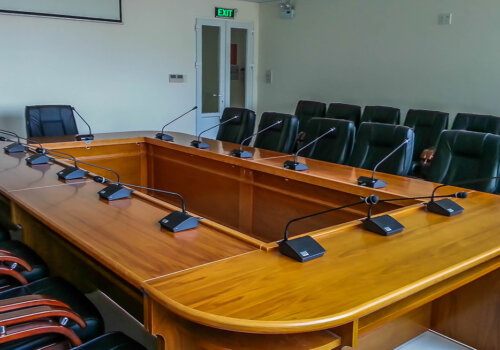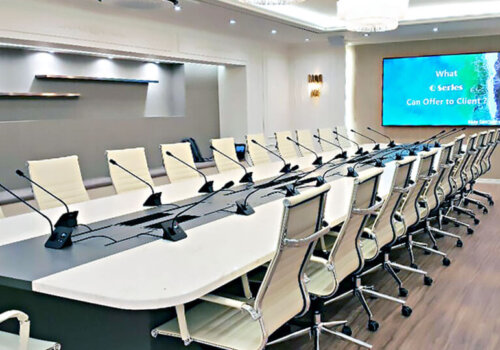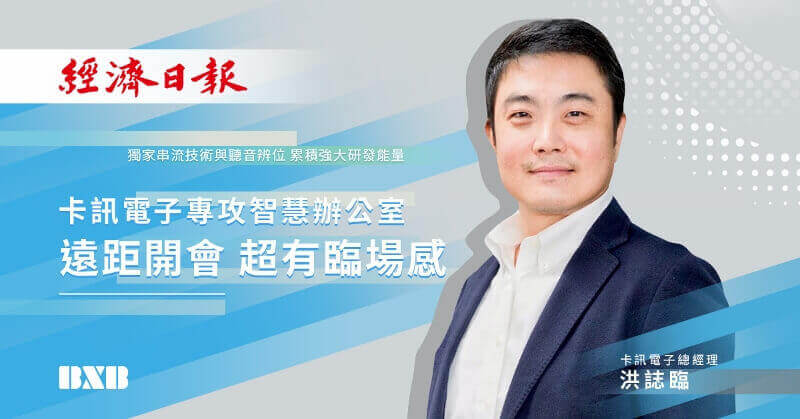
BXB Electronics has entered its 31st year this year. With the integration of audiovisual IoT as the core technology, BXB has become the leading manufacturer of conference systems and broadcasting systems in Taiwan. Their customers include HIWIN Technologies Corp. and ASE Technology Holding Co., Ltd. They have a market share of up to 60%. They’ve also sold products under their own BXB brand to more than 50 countries.
BXB Electronics was founded by Chao-Wen Wu in 1991. The company mainly produced public broadcasting and conference system products, and established its own brand “BXB”. The company aimed for the “Best X Best” , striving for excellence. And then, aim higher. From the Presidential Office Building, Executive Yuan, Central Weather Bureau, to National Chengchi (NCCU), Sun Yat-sen (NSYSU), and Cheng Kung University (NCKU), many other universities and near 70% of the schools at senior high school level or below implement their products.
Jerry Hung, President of BXB, recalled that about ten years ago he found out that the company’s sales revenue had stagnated. The reason was that the analog broadcasting system at that time was a “Will you ever need to repurchase?” product. His explanation is that, a friend proactively told him that they’re using a BXB product. After looking for the product, he realized that the product they were using had not been produced for ten years. There hadn’t been any problems during the 18 years of use of the product. Thus, there wasn’t a need to replace it. This made Jerry Hung realize a major bottleneck in the company’s operations.
With regard to that, he reflected on the “single equipment product” economic strategy which BXB had followed since its establishment. They only focused on enhancing the function and performance of the product. It will be difficult to meet market requirements in the future of digitalization and AI trends. He then decided to shift the focus into the field of economics.
What Jerry Hung had in mind was to develop digitalized products in order to increase sales revenue. In the past, the charge for building an analog conference system or broadcasting system for a customer was roughly 200,000 NT dollars. However, after integrating audiovisuals and digitalization to their products, the sales revenue they make from a single customer will increase by at least ten times the original amount. They can base their target customers on the original 60% market share in Taiwan, and expand product services to break through the bottleneck in the growth of their company.

Executive Yuan
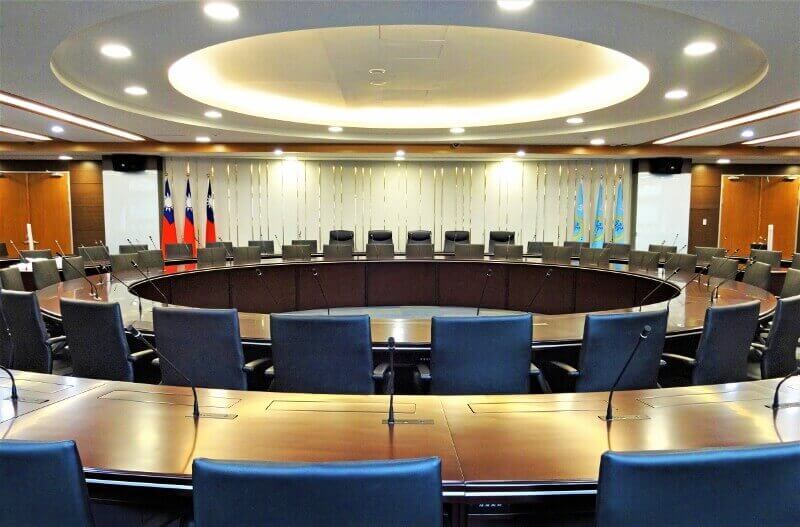
Ministry of Health and Welfare

Sun Yat-sen (NSYSU)

Taiwan Tainan District Court
Expanding product services to overcome the bottleneck
In response to the situation that broadcasting systems require a lot of talent from the audio engineering industry, but very few relevant departments in Taiwan train talent in this area. Jerry Hung spotted the numerous talents in the field of information and communication, so started integrating IT talent into the team to help expedite the transformation.
BXB adopted a multi-location marketing strategy. They set up two internal R&D teams, and one external team each in the following three locations: Industrial Technology Research Institute, Institute for Information Industry, III, and NSYSU. The five teams worked on the same digital audiovisual streaming technology in order to increase the success rate. They performed extensive information gathering of professional knowledge, to help the company join the industry of audiovisual IoT swiftly.
Jerry Hung stated that the company spent 20 million NT dollars in a two-year period to accumulate technologies and the know-how behind them. After integrating the solutions which the five teams have developed, they were able to ensure a smooth operation in transmission technology. The conference system product developed by the company with audiovisual IoT technology as the core was officially launched.
The company's digital international image and the main strategic axis in corporate marketing
The first corporate customer encountered was a hardware fastener company operated by a senior alumni of the College of Management, NSYSU, where Jerry Hung studied his EMBA. The alumni was very satisfied with the BXB product he used, and helped him gain more courage in breaking into the market. Jerry Hung thinks that a highly equipped meeting room showcases the business’ operational competencies. It’s like the company’s international image. Apart from the video conferencing technologies, digital cameras, high resolution monitor devices, the context design is the most important thing to take into consideration. These together allow the company to use the whole meeting room as a leverage in business negotiations, and present a company image of excellence through the display devices. Thus, he decided to use the company’s digital international image as the core marketing concept.
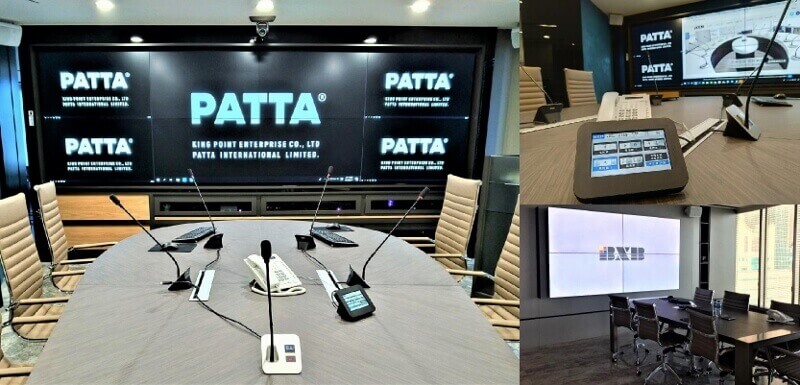
Due to the global impact of covid-19 pandemic, almost all major international conferences and summits were moved online. Many multinational and small and medium-sized enterprises held video conferences rather than physical meetings most of the time. The market growth in smart office working is rapid. The specifications, quality, and equipment of video conferences has started to receive attention.
In contrast, there are many limitations in traditional physical meetings and conferences. BXB applied technologies to connect individual offices, meeting rooms, training rooms, and halls to form a network. After multiple improvements to the software, device management can be done in mobile devices, laptop computers, etc. A sense of being in the meetings physically can be achieved.
Since 2012, BXB has been receiving awards regularly, including the “Excellent Performance Award of Outstanding Suppliers” in the Small Business Innovation Research (SBIR) program held in Kaohsiung City, the National Invention and Creation Award established by the Ministry of Economic Affairs (MOEA), two If Design Awards in Germany, and seven Taiwan Excellence Awards.

Taiwan Invention and Creation Award
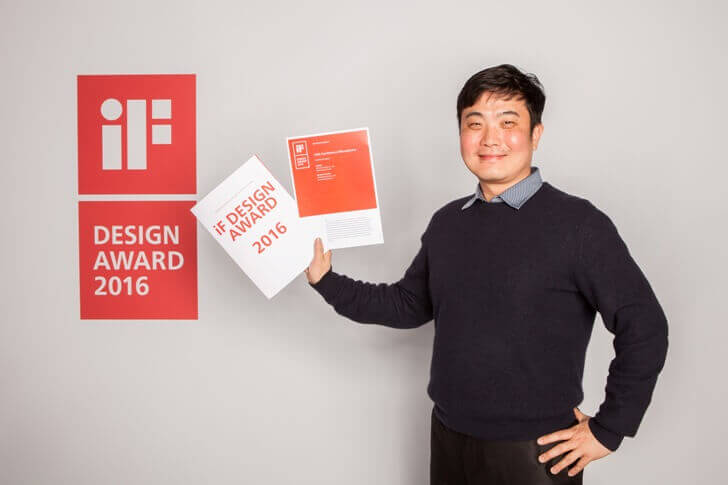
German iF Design Award

Dun & Bradstreet SME Elite Award
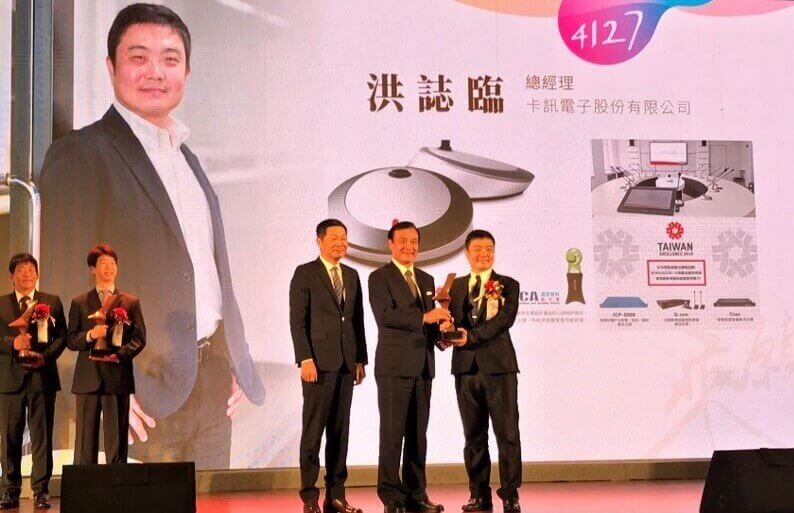
The 41st of Model Taiwan and Overseas Entrepreneurs
Three years ago, Jerry Hung further cooperated with the Small and Medium Enterprise Administration, MOEA. They embarked on Linkou Startup Terrace, and built a smart conference room which includes an IoT of the office area and access management system for doors. They shared the equipment with the Startup Terrace team, and provided visiting business organizations presentations. These received numerous great responses from business operators, and soon become a trend. This helped build their reputation in the market quickly.

Jerry Hung said that the annual sales revenue has grown by double digits every year over the past 6 years, which accumulates to a growth of 40%. The major revenue is brought in by the audiovisual IoT. Looking to the future, Hung states that BXB’s current sales target mostly B2B business operating systems. To find new niche markets, they are preparing to break into the B2C market. This is mainly because he spotted that the market needs for communication in office working isn’t yet satisfied. For example, most remote workers rely heavily on laptops, but the quality of video conferences and efficiency in communication of a laptop is not ideal. Regarding that, the company’s internal R&D team is focusing on the development of digital products, such as recording devices for audio, video, and writing, in order to retain the current customer base and to expand into new markets. At the same time, BXB is also preparing to enter the e-commerce industry to increase their market share.
With AI-influenced camera, sound source localization becomes possible
Jui-Wen Chen, manager of the Information and Communications Research Laboratories of the Industrial Technology Research Institute (ITRI), claimed that small and medium-sized enterprises would have to make huge investments of money and talent to grow in the industry of AI. The entry requirements of the industry are relatively high, as companies continue to develop the application of robotics, IoT, etc. The Department of Industrial Technology of MOEA has also proactively promoted the technology foresight of R&D, and applications such as speech recognition and the semantic interpretation for speech recognition technologies. In the past, ITRI has also researched and developed the Personal Companion Robot for Older People Living Alone (PECOLA) and karaoke machines with Taiwanese-songs. These are all key applications of the technology of IoT.
Jui-Wen Chen recalled that BXB wanted to enter the niche market in AI speech recognition, and has started collaborating with ITRI to do research into Chinese-English bilingual speech recognition technology. They’ve recently also started collaborating on developing the core technical module for 3D sound source localization. The source of the speaker’s voice will be detected by a microphone during conferences. The video camera will turn to the person speaking automatically, and interference from the fixed speakers will be filtered out. Simply put, when an employee in a smart office turns on the microphone and speaks, the video camera will automatically locate the source of the sound. Through its image tracking function, the video camera would identify the location of the speaker, track, focus, and then zoom in on the speaker. These features will add value to the existing video conferencing systems.’
Jerry Hung devoted effort in R&D, and powered through the hardship in business transformation
As the son-in-law of Chao-Wen Wu, the founder of BXB Electronics, Jerry Hung is at the helm of the company’s digital transformation and development together with Wu. He did not fail their expectations, and has found a blue ocean for the business. Jerry Hung successfully led the company through the transformation from a traditional analog broadcasting system equipment manufacturer to the most successful brand in conferencing and broadcasting systems.
After graduating from college, Jerry Hung worked as an electronic engineer, audiovisual equipment sales representative, etc. Having accumulated solid knowledge and skills in electronic engineering, he founded Yin Chen Enterprise in 2001 to fulfill his entrepreneurial dream. Yin Chen Enterprise was engaged in the integration and sales of broadcasting systems. Due to business contact, he met and fell in love with Pei-Jung Wu, the export manager of BXB Electronics at the time. He accepted Chao-Wen Wu’s sincere invitation and joined the management team of BXB Electronics.
Jerry Hung said that the biggest difference between founding his own business and joining BXB is the founder of BXB grew up in a different era and different industrial environment compared to the ones he grew up in. Therefore, the two had different opinions regarding the operation and future development of the business. Through communication, the open-minded and enlightened founder of BXB decided to let go. This decision provided encouragement and opportunities for the young couple. The pair, Jerry Hung and Pei-Jung Wu, took charge of the operation of the company in 2011, and Hung had a chance to make use of his talent and ambition in the career.
Being at the helm of the company’s digital transformation, Jerry Hung invested tens of millions NT dollars every year into the R&D of technologies. However, the process was full of uncertainties and interference, which delayed the launching of the new products. These added to the burden on his shoulders and, for a period of time, he had a hard time falling asleep at night.
Fortunately, the R&D team handed over a remarkable result in the end. The conference system launched with audiovisual streaming technology received numerous great responses. It soon become a trend. Many business operators placed orders with them. Even Yung-Tsai Cho, board chairman of Hiwin Technologies Corp., ordered sets of conference systems for 7 meeting rooms. The company experienced a surge of orders, which motivated the growth in the operation of the company. As updates are release, BXB maintained the advantages it pioneered in the market.
One thing worth mentioning is that, during the transformation, he found out the importance of corporate transparency in financial reporting. He entrusted Deloitte & Touche with the auditing and attestation of their financial statements, and registered with the Go Incubation Board for Startup and Acceleration Firms (GISA) in 2016. He plans to undertake BXB’s initial public offering (IPO) in the future, to further enhance and expand the business. In addition, Hung emphasized that after experiencing the transformation, he has a clear vision for BXB’s future development. In the past, the market has always paid too much attention to the upgrading of hardware, while the actual needs of customers aren’t met. He intends to provide customers with noticeable improvements in their product, to keep pace with the digital era.
Transform the Field of Economics with BXB's Exclusive Streaming Technology
The key to BXB’s success in becoming the largest leading brand of conference systems and broadcasting systems in Taiwan include the following: Successfully researched and developed audiovisual streaming technology; simplified and user-friendly operating system software; and the application of an adaptive screen to the uses’ devices.
BXB stated that with the current business size of 60 employees, there are 15 people on the R&D team, including the front and back-end software and hardware research developers, research development strategists and screen display designers. The R&D team accounts for 25% of the total number of employees. This shows the extent to which the company values internal R&D. It is one of the key strengths that makes them stand out from the rest of the competitors in the market.
First, looking from the perspective of IoT technology, most IoT user context employs low data stream processing. The streaming bandwidth requirement is low. But it’s a different case for audiovisual IoT. Much higher streaming speed and smoothness are required to stream audio and video in order to avoid lags, freezing, and buffering while streaming. This raises the technical threshold. The exclusive streaming technology soon becomes one of BXB’s core competencies.
Second, the simplified and user-friendly manipulations of the operating system software and the adaptive screens and pages are designed through meticulous analyzation of user contexts, with numerous updates and revisions. The convenience and fluency far surpass that of their competitors.
In addition, they’ve adapted a new screen ratio in the layout of a smart meeting room. The traditional screen display adopts the 16:9 aspect ratio. That causes limitation in the height and width of the screen. The part of the screen less than 75 cm from the ground could be ineffective, because it is possible that only people sitting in the first row are able to see the contents in the lower part of the screen. People will be stretching their necks for a better view and moving their chairs around in meetings. That will cause inconvenience and trouble, and affects the efficiency of the meeting.
Addressing that issue, through successful R&D, BXB extended the display ratio of 16:9 into 32:9. By moving the contents of the lower part of the screen to the left or right, they helped meeting participants gain a better view of the contents displayed on screen. In addition, there are cameras at the front and back of the meeting room. Displays are adjusted per different circumstances in meetings.
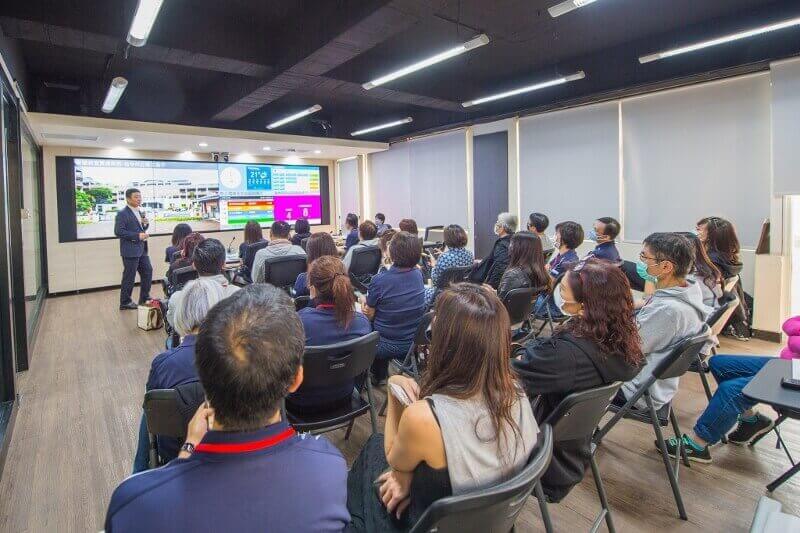

BXB stated that they’re researching and developing process robots to entrust daily repetitive tasks across multiple departments to the AI machines. For example, if a salesperson fills out a purchase order, a message will be sent to the warehouse to inquire whether there is sufficient stock, or if it is necessary to arrange for production. Safety stock and other concerns may be involved in the process.

